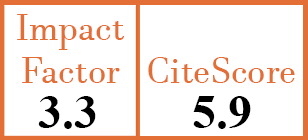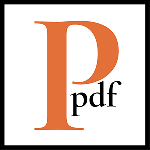Full Papers
IL-1 targeting agents in Schnitzler syndrome: a multicentre, real-world study from the international AIDA Network Schnitzler Registry
L. Calabrese1, A. Cartocci2, A. Vitale3, E. Martín-Nares4, M. D’onghia5, V. Caggiano6, J. Torres-Ruiz7, R. Lopez8, K. Jahnz-Rozyk9, K. Rybak10, M. Frassi11, F. Franceschini12, F. Crisafulli13, A. Tufan14, H. Kucuk15, A. Avanoglu Guler16, A. Gidaro17, L. La Cava18, F. Della Casa19, I. Mormile20, E. Cinotti21, G. Lopalco22, J. Sota23, J. Sbalchiero24, G. Emmi25, A. Recke26, S. Costi27, P. Sfriso28, S. Monti29, O. Viapiana30, A. Hinojosa-Azaola31, A. Balistreri32, C. Fabiani33, B. Frediani34, P. Rubegni35, E. Wiesik-Szewczyk36, L. Cantarini37
- Dermatology Unit, Department of Medical, Surgical and Neurological Sciences, University of Siena; Azienda Ospedaliero-Universitaria Senese [European Reference Network (ERN) for Rare Immunodeficiency, Autoinflammatory and Autoimmune Diseases (RITA) Center] Siena; and Institute of Dermatology, Catholic University of the Sacred Heart, Rome, Italy. laura.calabrese@unisi.it
- Dermatology Unit, Department of Medical, Surgical and Neurological Sciences, University of Siena; Azienda Ospedaliero-Universitaria Senese [European Reference Network (ERN) for Rare Immunodeficiency, Autoinflammatory and Autoimmune Diseases (RITA) Center] Siena; and Department of Medical Biotechnologies, University of Siena, Italy.
- Azienda Ospedaliero-Universitaria Senese [European Reference Network (ERN) for Rare Immunodeficiency, Autoinflammatory and Autoimmune Diseases (RITA) Center] Siena; and Department of Medical Sciences, Surgery and Neurosciences, Research Center of Systemic Autoinflammatory Diseases and Behçet’s Disease Clinic, University of Siena, Italy.
- Department of Immunology and Rheumatology, Instituto Nacional de Ciencias Médicas y Nutrición Salvador Zubirán, Mexico City, Mexico.
- Dermatology Unit, Department of Medical, Surgical and Neurological Sciences, University of Siena; and Azienda Ospedaliero-Universitaria Senese [European Reference Network (ERN) for Rare Immunodeficiency, Autoinflammatory and Autoimmune Diseases (RITA) Center] Siena, Italy.
- Azienda Ospedaliero-Universitaria Senese [European Reference Network (ERN) for Rare Immunodeficiency, Autoinflammatory and Autoimmune Diseases (RITA) Center] Siena; and Department of Medical Sciences, Surgery and Neurosciences, Research Center of Systemic Autoinflammatory Diseases and Behçet’s Disease Clinic, University of Siena, Italy.
- Department of Immunology and Rheumatology, Instituto Nacional de Ciencias Médicas y Nutrición Salvador Zubirán, Mexico City, Mexico.
- Azienda Ospedaliero-Universitaria Senese [European Reference Network (ERN) for Rare Immunodeficiency, Autoinflammatory and Autoimmune Diseases (RITA) Center] Siena; and Department of Medical Sciences, Surgery and Neurosciences, Research Center of Systemic Autoinflammatory Diseases and Behçet’s Disease Clinic, University of Siena, Italy.
- Department of Internal Medicine, Pneumonology, Allergology and Clinical Immunology, Central Clinical Hospital of the Ministry of National Defense, Military Institute of Medicine, National Research Institute, Warsaw, Poland.
- Department of Internal Medicine, Pneumonology, Allergology and Clinical Immunology, Central Clinical Hospital of the Ministry of National Defense, Military Institute of Medicine, National Research Institute, Warsaw, Poland.
- Rheumatology and Clinical Immunology, ASST Spedali Civili and University of Brescia [European Reference Network (ERN) for Rare Immunodeficiency, Autoinflammatory and Autoimmune Diseases (RITA) Center], Brescia, Italy.
- Rheumatology and Clinical Immunology, ASST Spedali Civili and University of Brescia [European Reference Network (ERN) for Rare Immunodeficiency, Autoinflammatory and Autoimmune Diseases (RITA) Center], Brescia, Italy.
- Rheumatology and Clinical Immunology, ASST Spedali Civili and University of Brescia [European Reference Network (ERN) for Rare Immunodeficiency, Autoinflammatory and Autoimmune Diseases (RITA) Center], Brescia, Italy.
- Gazi University Hospital, Department of Internal Medicine, Division of Rheumatology, Ankara, Turkey.
- Gazi University Hospital, Department of Internal Medicine, Division of Rheumatology, Ankara, Turkey.
- Gazi University Hospital, Department of Internal Medicine, Division of Rheumatology, Ankara, Turkey.
- Department of Biomedical and Clinical Sciences Luigi Sacco, Luigi Sacco Hospital, University of Milan, Italy.
- Department of Biomedical and Clinical Sciences Luigi Sacco, Luigi Sacco Hospital, University of Milan, Italy.
- Department of Translational Medical Sciences, Section of Clinical Immunology, University of Naples Federico II, Naples, Italy.
- Department of Translational Medical Sciences, Section of Clinical Immunology, University of Naples Federico II, Naples, Italy.
- Dermatology Unit, Department of Medical, Surgical and Neurological Sciences, University of Siena; and Azienda Ospedaliero-Universitaria Senese [European Reference Network (ERN) for Rare Immunodeficiency, Autoinflammatory and Autoimmune Diseases (RITA) Center] Siena, Italy.
- Department of Precision and Regenerative Medicine and Ionian Area (DiMePRe-J) Policlinic Hospital, University of Bari, Italy.
- Azienda Ospedaliero-Universitaria Senese [European Reference Network (ERN) for Rare Immunodeficiency, Autoinflammatory and Autoimmune Diseases (RITA) Center] Siena; and Department of Medical Sciences, Surgery and Neurosciences, Research Center of Systemic Autoinflammatory Diseases and Behçet’s Disease Clinic, University of Siena, Italy.
- Azienda Ospedaliero-Universitaria Senese [European Reference Network (ERN) for Rare Immunodeficiency, Autoinflammatory and Autoimmune Diseases (RITA) Center] Siena; and Department of Medical Sciences, Surgery and Neurosciences, Research Center of Systemic Autoinflammatory Diseases and Behçet’s Disease Clinic, University of Siena, Italy.
- Department of Medical, Surgical and Health Sciences, University of Trieste, and Clinical Medicine and Rheumatology Unit, Cattinara University Hospital, Trieste, Italy; and Centre for Inflammatory Diseases, Monash University Dept. of Medicine, Monash Medical Centre, Melbourne, Australia.
- Department of Dermatology, Allergology and Venerology, University Hospital Schleswig-Holstein, Campus Lübeck, [European Reference Network (ERN) for Rare Immunodeficiency, Autoinflammatory and Autoimmune Diseases (RITA) Center], Lübeck, Germany.
- Department of Clinical Sciences and Community Health, Research Center for Adult and Paediatric Rheumatic Diseases, University of Milan, Italy.
- Rheumatology Unit, Department of Medicine, University of Padova, [European Reference Network (ERN) for Rare Immunodeficiency, Autoinflammatory and Autoimmune Diseases (RITA) Center], Padova, Italy.
- Division of Rheumatology, Fondazione IRCCS Policlinico San Matteo, Pavia; and Department of Internal Medicine and Therapeutics, Università di Pavia, Italy.
- Rheumatology Unit, Department of Medicine, University and Azienda Ospedaliera Universitaria Integrata of Verona, Italy.
- Department of Immunology and Rheumatology, Instituto Nacional de Ciencias Médicas y Nutrición Salvador Zubirán, Mexico City, Mexico.
- Azienda Ospedaliero-Universitaria Senese [European Reference Network (ERN) for Rare Immunodeficiency, Autoinflammatory and Autoimmune Diseases (RITA) Center] Siena; and Bioengineering and Biomedical Data Science Lab, Department of Medical Biotechnologies, University of Siena, Italy.
- Azienda Ospedaliero-Universitaria Senese [European Reference Network (ERN) for Rare Immunodeficiency, Autoinflammatory and Autoimmune Diseases (RITA) Center] Siena; and Ophthalmology Unit, Department of Medicine, Surgery and Neurosciences, University of Siena, Italy.
- Azienda Ospedaliero-Universitaria Senese [European Reference Network (ERN) for Rare Immunodeficiency, Autoinflammatory and Autoimmune Diseases (RITA) Center] Siena; and Department of Medical Sciences, Surgery and Neurosciences, Research Center of Systemic Autoinflammatory Diseases and Behçet’s Disease Clinic, University of Siena, Italy.
- Dermatology Unit, Department of Medical, Surgical and Neurological Sciences, University of Siena; and Azienda Ospedaliero-Universitaria Senese [European Reference Network (ERN) for Rare Immunodeficiency, Autoinflammatory and Autoimmune Diseases (RITA) Center] Siena, Italy.
- Department of Internal Medicine, Pneumonology, Allergology and Clinical Immunology, Central Clinical Hospital of the Ministry of National Defense, Military Institute of Medicine, National Research Institute, Warsaw, Poland.
- Azienda Ospedaliero-Universitaria Senese [European Reference Network (ERN) for Rare Immunodeficiency, Autoinflammatory and Autoimmune Diseases (RITA) Center] Siena; and Department of Medical Sciences, Surgery and Neurosciences, Research Center of Systemic Autoinflammatory Diseases and Behçet’s Disease Clinic, University of Siena, Italy. cantariniluca@hotmail.com
CER18663
2025 Vol.43, N°10
PI 1753, PF 1762
Full Papers
Free to view
(click on article PDF icon to read the article)
PMID: 41133355 [PubMed]
Received: 27/02/2025
Accepted : 07/07/2025
In Press: 23/10/2025
Published: 23/10/2025
Abstract
OBJECTIVES:
Schnitzler syndrome (SchS) is a rare autoinflammatory disease characterised by a primary pathogenic involvement of interleukin (IL)-1. Therefore, IL-1 blockers are currently considered the optimal therapeutic option for SchS patients. However, while IL-1 blockers are first-line for SchS, long-term real-world evidence is limited by the rarity of the disease. We assessed the long-term effectiveness and safety of the IL-1 inhibitors anakinra and canakinumab used in SchS, also looking for variables capable of affecting global effectiveness and drug retention over time.
METHODS:
Data analysed in this study were drawn from the international AutoInflammatory Disease Alliance (AIDA) Registry dedicated to SchS.
RESULTS:
28 SchS patients corresponding to 37 treatment lines were included in the study. Complete and partial responses occurred in 73.1% and 29.9% of anakinra-treated patients, and 66.8% and 33.3% with canakinumab. The overall anakinra and canakinumab drug retention rates at 12-, 36-, and 60-month follow-up were 85.6%, 81.7% and 64.7%, respectively; the probability of discontinuing IL-1 inhibitors at 12-, 36- and 60 months due to loss of effectiveness was 9.6%, 13.7% and 24.5%, respectively. The maximum IgG M-protein levels were found to be significantly higher in patients achieving partial response compared to those benefiting from complete response (p=0.032). Lymphadenopathy independently predicted anti-IL-1 discontinuation due to loss of effectiveness (HR 7.78, 95% CI: 1.27–47.9; p=0.027).
CONCLUSIONS:
The present study confirms the high effectiveness of IL-1 inhibitors in controlling SchS, including the complete and partial response rates and the long-term survival. Elevated IgG M-protein levels and the presence of lymphadenopathy should be considered as potential indicators for identifying patients more likely to exhibit a partial response and a possible loss of treatment efficacy.



